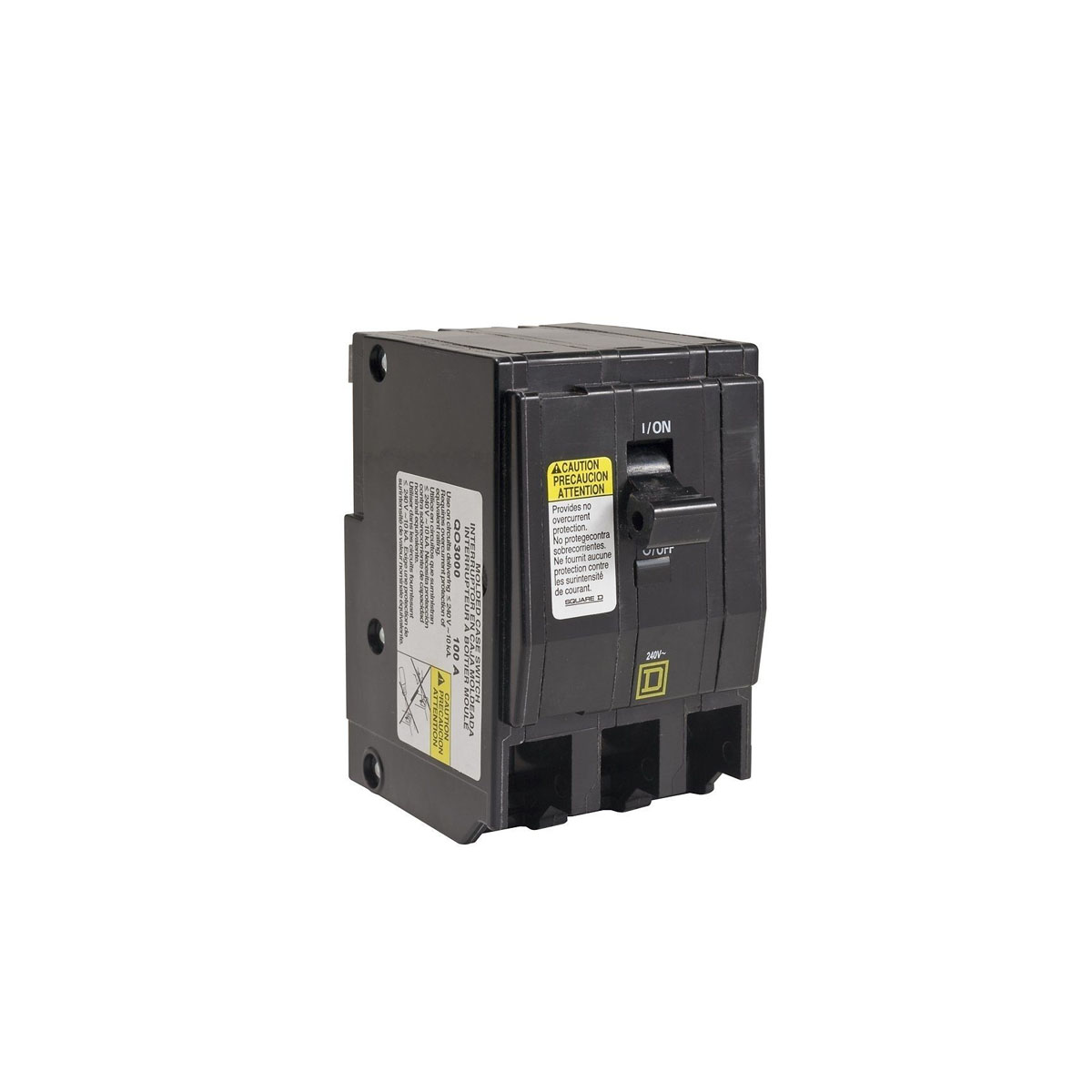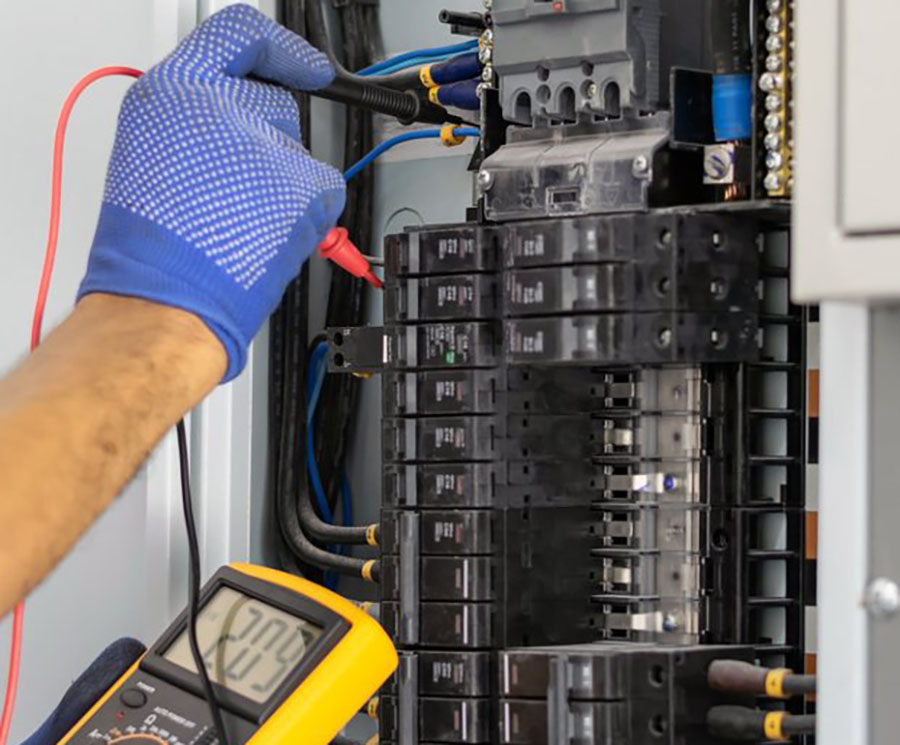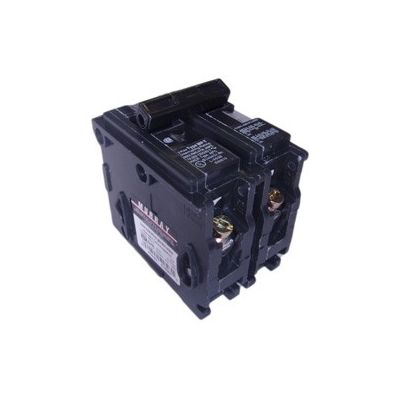Are you researching circuit breakers for your next project or trying to replace an old, worn-out breaker? To choose the right one, you’ll need to know the requirements of your application and the specifics of the breaker itself (such as trip mechanisms, mounting hardware, voltage, and amperage). In this post, we’ll give you a helicopter view of four different types of circuit breakers and their applications.
Circuit Breakers are Categorized by Several Factors
There are several different types of circuit breakers. The main reason there are so many is that there are thousands of different applications that all require different voltage ratings, mechanisms, form factors, and more.
Therefore, circuit breakers are categorized by these factors to make selecting the right one for your job easier. Here are the common categories.
By Voltage
Circuit breakers are either low voltage or high voltage. They are hard to mix up and should be the first thing you look for when you’re choosing a circuit breaker.
Low Voltage Circuit Breakers
A low voltage circuit breaker is designed for circuits with 600 volts or lower ratings. They most commonly come as a modeled case and always contain a safety shut-off mechanism that snaps off if they experience an overload or short-circuit event.
Low voltage circuit breakers are common in residential, commercial, and industrial applications.
High Voltage Circuit Breakers
High-voltage circuit breakers have robust breaker contacts that can handle and disconnect loads greater than 600 volts. They have special arcing chambers to contain large arcs.
Their arcing chambers are either vacuum, oil, sulfur hexafluoride (SF6), air, or other self-extinguishing mediums.
High voltage circuit breakers are most common in electrical substations, plants, and some industrial manufacturing areas.
By Interrupting Mechanism
There are many different types of interrupting mechanisms in circuit breakers. Basically, the interrupting mechanism stops the current flow and shuts off the power. The most common types are air, oil, vacuum, MCCB, and ICCB.
Here is how the different types work.
Air Circuit Breakers
Unlike MCCBs and ICCBs, air circuit breakers operate in the open, without an enclosed case. This makes them easy to modify or recondition as needed. They aren’t as commonly used as other types of circuit breakers, but they can operate on both AC and DC circuits with either fixed or draw-out enclosures.
Air Circuit Breaker Applications
Most air circuit breakers are used for indoor, low voltage applications, although they sometimes offer a good solution for medium voltage environments as well.
Oil Circuit Breaker
An oil circuit breaker uses oil as a dielectric (insulating) medium to extinguish arcs. They are used mainly in power plants and electrical substations. They are low-cost, simple, and can handle high voltage.
MCB - Miniature Circuit Breaker
Like all circuit breakers, MCBs are designed to prevent damage to electrical circuits from overloads and shorts.
They protect equipment, and their small size makes them perfect for isolating electrical components in residential, industrial, and commercial applications. Their amperage ratings typically range from 2 to 32 amps and are almost always low-voltage rated.
Vacuum Circuit Breakers
Vacuum circuit breakers are so named because the electrical arc interruption takes place in a vacuum. Usually housed in glass or ceramic, they are compact and low maintenance with less fire hazard potential than other kinds of breakers.
Vacuum Circuit Breaker Applications
Vacuum circuit breakers are most commonly used in medium voltage industrial and commercial applications such as hotels, water treatment plants, healthcare facilities, and power plants. Common models include 6.6 kV, 11 kV, and 33 kV.
Molded Case Circuit Breakers
Molded case circuit breakers (MCCB) contain all components within an insulated molded case. They can be used in almost any environment, from residential applications to industrial or commercial systems. MCCBs protect against short circuits, ground faults, and thermal overloads using thermomagnetic and electromagnetic mechanisms to trip the breaker and interrupt the flow.
MCCB Applications
MCCB frame sizes range from 250 to 2000 amps. They can be rated as low as 75A, making them ideal for low voltage environments. They can also be used in medium voltage applications such as industrial or commercial control panels and switchboards.
Insulated Case Circuit Breakers
Insulated case circuit breakers (ICCB) also enclose all components within an insulated case. The difference is that they include a 2-step stored energy mechanism and they are available in larger frame sizes and higher amp ratings than MCCBs. Constructed with both fixed-mount or draw-out enclosures, they are made entirely of plastic, with no metal components on the frame.
ICCB Applications
Higher ratings and larger frame sizes ranging from 800 to 5000 amps give ICCBs more versatility than some other breakers. They are commonly used for low voltage industrial applications and can replace old air circuit breakers in some circumstances.
GFI/GFCI - Ground Fault
Ground fault circuit interrupters (GFCIs) protect people from electrical shock when the circuit comes in contact with water. They are required by the National Electric Code (NEC) in wet or damp areas like bathrooms and kitchens.
By Installation Location
There are two types of installation locations for breakers, indoor and outdoor. Only certain breakers are rated for use outside; here’s how the two compare:
Indoor Circuit Breakers
Indoor circuit breakers are rated for use inside a weather-resistant enclosure– like your breaker box in your home. They’re usually low to medium voltage with a metal-clad switchgear enclosure.
There is an extremely high chance the circuit breakers in your home or business are just indoor rated.
Outdoor Circuit Breakers
Outdoor-rated circuited breakers are designed to be used in structures without roofs. They are robust and can withstand a lot of wear and tear. You’ll find these in power stations, outdoor manufacturing/processing areas, and other outdoor areas that require power.
By External Design
The external design of the circuit is yet another factor everyone needs to consider. There are two main types– dead tank and live tank:
Dead Tank
Dead tank circuit breakers have a tank enclosure at ground potential. The tank houses all of the interrupting and insulating mediums. It is at dead potential or is shorted to ground.
Live Tank
Live tank circuit breakers have tank housing interrupters that are at a potential above ground; it has some insulation medium in between.
Identifying Your Breaker When You Have to Replace It With a Similar One
When replacing an old circuit break, it is extremely important to identify the correct type first. You must replace it with the same model or a similar one with the same (or higher) ratings and capabilities. Otherwise, it will not fit, or you could face severe problems down the line.
Identifying circuit breakers isn’t hard. The most work you will have to do is likely some light reading or some research online. Check out our guide on identifying circuit breakers types to learn more.
Conclusion
These are just a few of the types of circuit breakers and applications on the market. Choosing the right one takes careful consideration of the breaker’s design and amp load, as well as its intended use.
If you need help finding the right breaker or replacing an old breaker, call Bay Power at 866-543-1231. We’re always ready to answer your questions or provide a quote!





